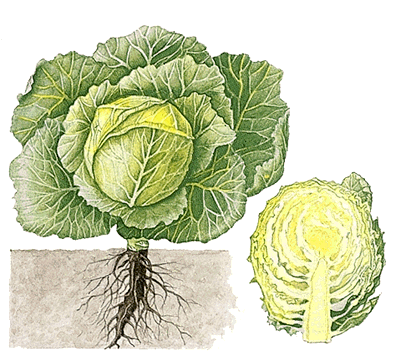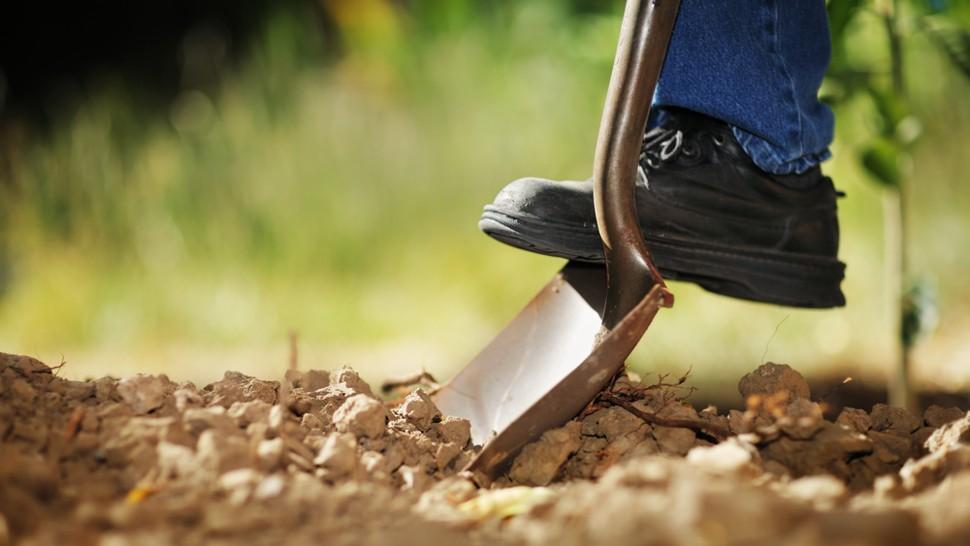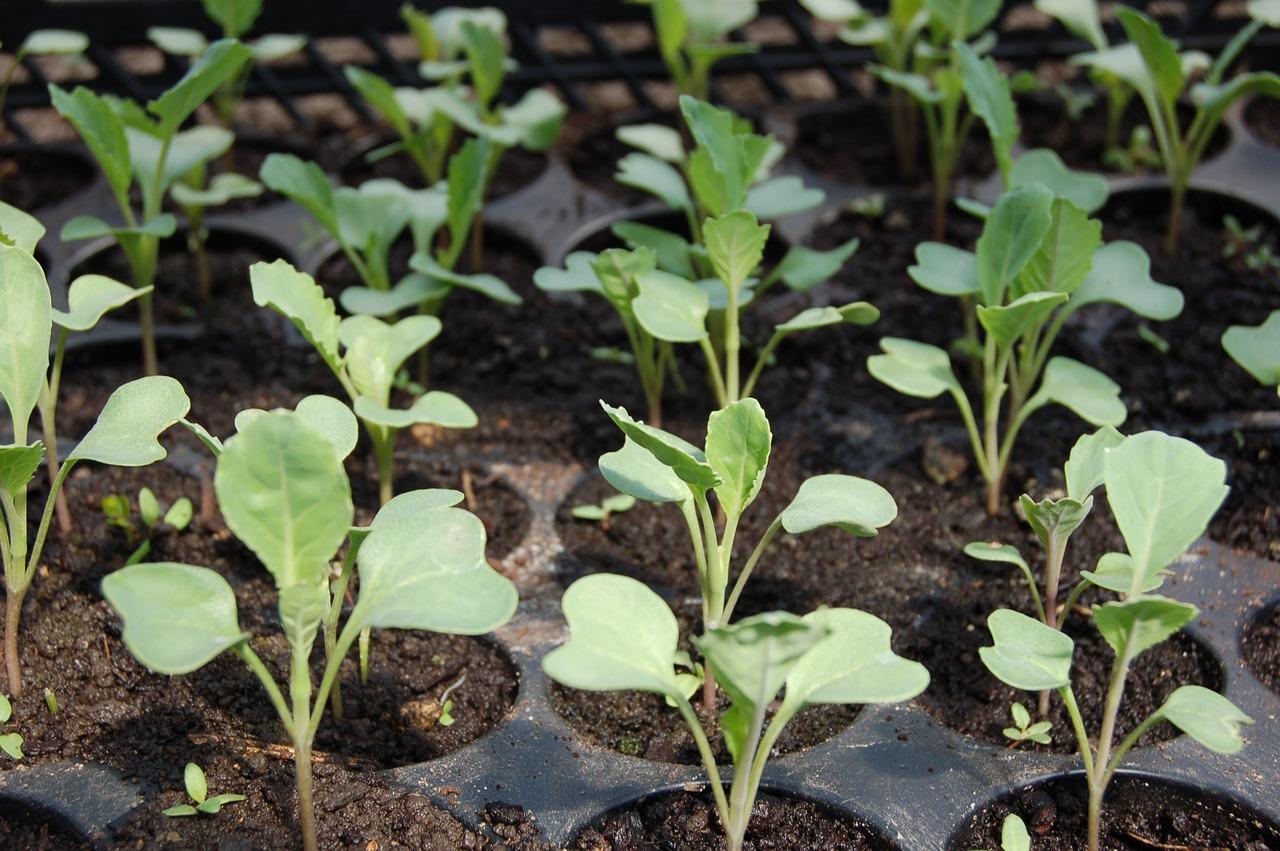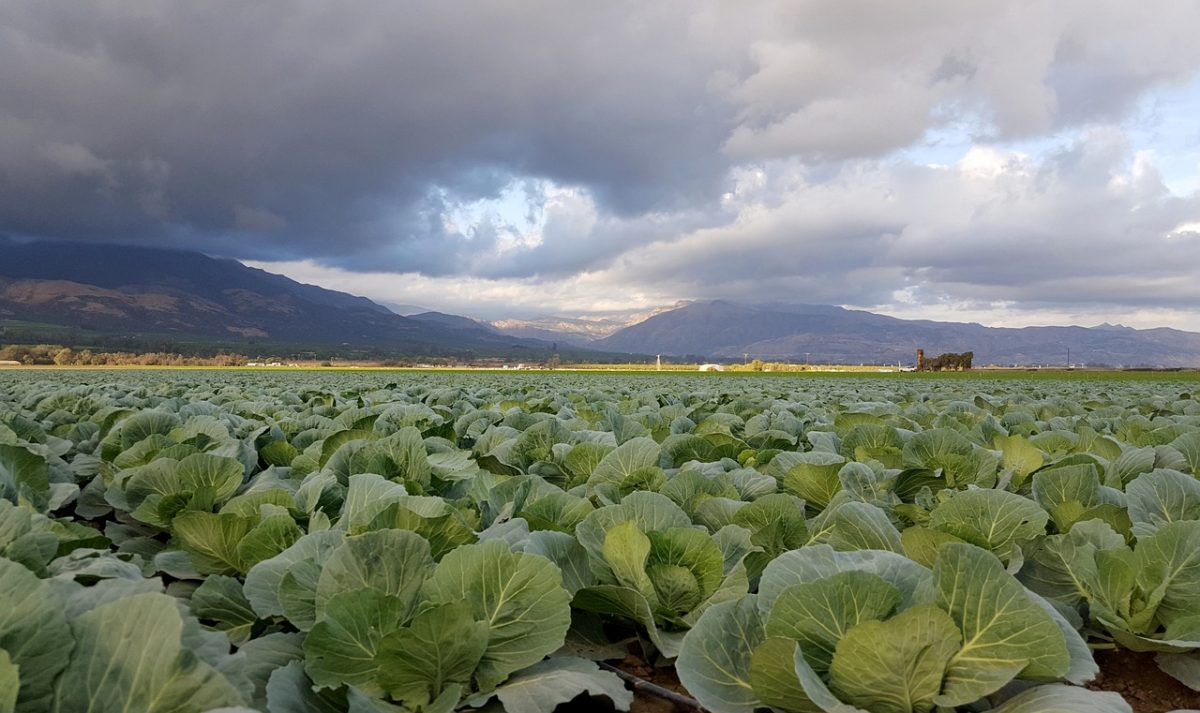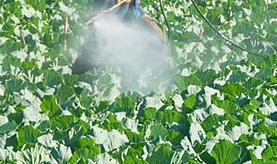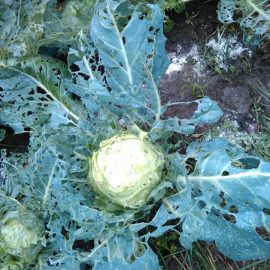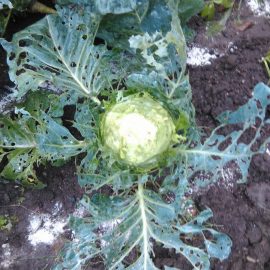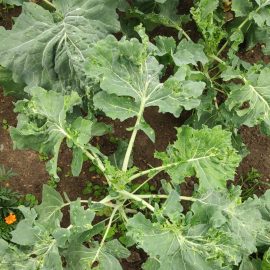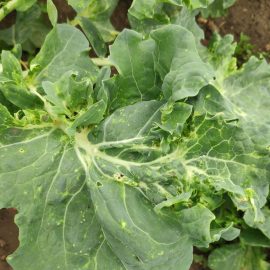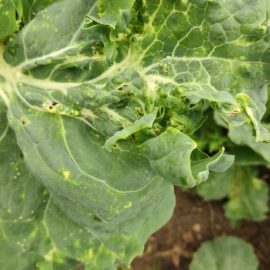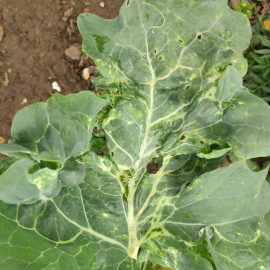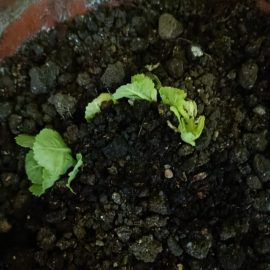Cabbage, information about crop management
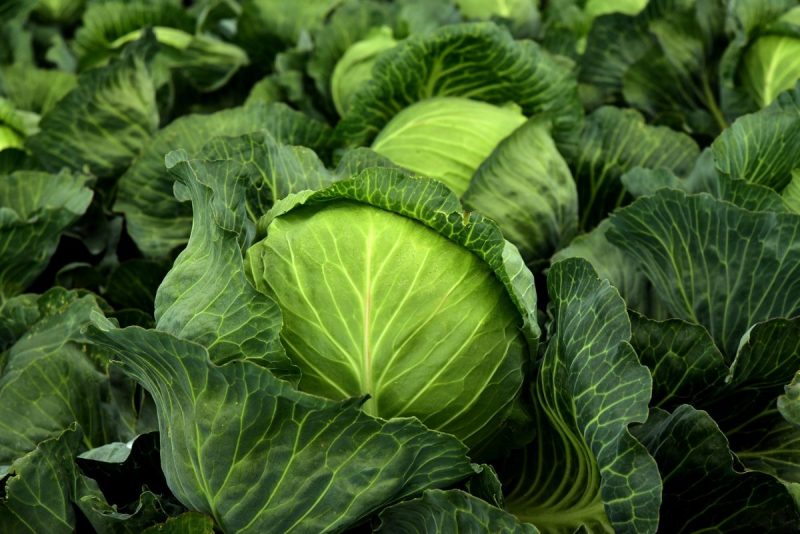
Cabbage (Brassica oleracea convar. capitata) is cultivated for its heads which are used in fresh, prepared, or processed food. They contain carbohydrates, proteins, vitamins C and B, carotene, potassium, magnesium, calcium, and volatile substances with bacteriostatic action. Cabbage is an important source of vitamins and minerals in winter. It retains most of its nutrients, even when preserved.
Cabbage is native to the Mediterranean Sea basin, where it was cultivated by the Greeks and Romans. In other parts of Europe, it spread through the 9th and 12th centuries. Cabbage is widespread in most temperate and subtropical climates. The biggest cabbage-growing countries are Poland, Romania, Great Britain, Spain, France, and Germany.
Cabbage is a biennial species, in the first year, it forms a leafy head, and in the second year it flowers and seeds. The root is tap-rooted and branched, with a great capacity to explore the soil. The stem is short and thickened, and at the top are the buds from which, in the second year, will form flowering stems. The leaves have a developed leaf blade, varied shape, and blue-green color. The head consists of about 70 leaves and represents 80% of the plant’s mass. The flowering stems are branched and reach a height of 150 cm. The inflorescence is a raceme with yellow flowers.
Climate and soil requirements
The optimum growing temperature for plants is 15-20℃ and the minimum is 1-2℃. Cabbage seeds germinate at 3-4℃. The plant needs large amounts of water, and soil moisture needs to be maintained around 75%. Light requirements are high, especially in the sprouting phase. Cabbage prefers fertile soils with a pH of 6.5-7.8.
Cultivation
EARLY CULTURE
Crop rotation
Cabbage can return to the same field after 3-4 years. Best results are obtained after wheat, barley, oats, clover, alfalfa, peas, beans, tomatoes, eggplants, zucchini, and pumpkins. Cabbage cannot be cultivated after radish, mustard, or other crucifers, as they have common diseases and pests.
Soil preparation
For early planting, soil preparation should start in autumn, removing the remains of the previous crop, applying organic and chemical fertilizers, and plowing to a depth of 28-30 cm. Cabbage has a well-developed root system and therefore requires well-worked soil. In the spring, before planting, work continues with fertilizer administration, soil tilling, and herbicide application. Drip irrigation can also be installed just before planting.
Recommended products
-
You can find products on a different store
Change Store -
You can find products on a different store
Change Store -
You can find products on a different store
Change Store -
You can find products on a different store
Change Store -
You can find products on a different store
Change Store -
You can find products on a different store
Change Store -
You can find products on a different store
Change Store -
You can find products on a different store
Change Store -
You can find products on a different store
Change Store -
You can find products on a different store
Change Store -
You can find products on a different store
Change Store -
You can find products on a different store
Change Store -
You can find products on a different store
Change Store -
You can find products on a different store
Change Store -
You can find products on a different store
Change Store -
You can find products on a different store
Change Store -
You can find products on a different store
Change Store -
You can find products on a different store
Change Store -
You can find products on a different store
Change Store -
You can find products on a different store
Change Store -
You can find products on a different store
Change Store -
You can find products on a different store
Change Store -
You can find products on a different store
Change Store -
You can find products on a different store
Change Store
Recommended products
-
You can find products on a different store
Change Store -
You can find products on a different store
Change Store -
You can find products on a different store
Change Store -
You can find products on a different store
Change Store -
You can find products on a different store
Change Store -
You can find products on a different store
Change Store -
You can find products on a different store
Change Store -
You can find products on a different store
Change Store -
You can find products on a different store
Change Store -
You can find products on a different store
Change Store -
You can find products on a different store
Change Store -
You can find products on a different store
Change Store -
You can find products on a different store
Change Store -
You can find products on a different store
Change Store -
You can find products on a different store
Change Store -
You can find products on a different store
Change Store -
You can find products on a different store
Change Store -
You can find products on a different store
Change Store -
You can find products on a different store
Change Store -
You can find products on a different store
Change Store -
You can find products on a different store
Change Store -
You can find products on a different store
Change Store -
You can find products on a different store
Change Store -
You can find products on a different store
Change Store
Seedling preparation and planting
The cabbage crop is established by seedlings, previously produced in seedbeds. It is recommended to use peat as a substrate for sowing and sprouting, as it is free from diseases and pests. When 2-3 true leaves have formed, you can apply foliar fertilizers.
Sowing takes place between January and February and 10-12 grams of seed can be used per square metre. The seed must be treated before sowing. When the plants have 1-2 true leaves, they should be repotted in pots 5 x 5 cm. Water the seedlings moderately. The seedlings must be treated with specific fungicides to prevent damping off.
Water the seedlings well the day before planting and harden off 2-3 weeks before. This procedure involves opening the ventilation windows in the morning and closing it in the evening. In the last week, the windows should also be left open during the night so that the plants can acclimatize to the new environmental conditions. Planting starts in March when the soil temperature is at least 8℃. The planting season continues until early April. The distance between rows is 60-70 cm and the distance between plants per row is 30 cm.
Pest and disease control
It will be done by applying treatments with approved fungicides or insecticides. The crop should be checked periodically because the attack of diseases and pests is rapid and in a short period, the crop can be destroyed. To avoid the appearance of diseases or pests resistant to pesticides, it is recommended to alternate products.
Weed control
It is recommended to carry out 3-4 hoeings at a time to destroy crusts and weeds. Weeds can also be controlled chemically by applying herbicides.
Recommended products
-
You can find products on a different store
Change Store -
You can find products on a different store
Change Store -
You can find products on a different store
Change Store -
You can find products on a different store
Change Store -
You can find products on a different store
Change Store -
You can find products on a different store
Change Store -
You can find products on a different store
Change Store -
You can find products on a different store
Change Store -
You can find products on a different store
Change Store -
You can find products on a different store
Change Store -
You can find products on a different store
Change Store -
You can find products on a different store
Change Store -
You can find products on a different store
Change Store -
You can find products on a different store
Change Store -
You can find products on a different store
Change Store -
You can find products on a different store
Change Store -
You can find products on a different store
Change Store -
You can find products on a different store
Change Store -
You can find products on a different store
Change Store -
You can find products on a different store
Change Store -
You can find products on a different store
Change Store -
You can find products on a different store
Change Store -
You can find products on a different store
Change Store -
You can find products on a different store
Change Store
Other works and care tips
Four days after planting, fill the gaps in the crop with spare seedlings of the same variety/hybrid.
Cabbage has high water consumption and if no rainfall is recorded, irrigation is necessary throughout the growing season. Watering can be done in furrows, by sprinkling, or preferably by drip.
The soil can be mulched before planting with polythene foil or after planting if you are using plant material such as straw. This will make the soil warmer, weeds will stop growing and the microbiological activity of the soil will be stimulated.
Having a very well-developed vegetative mass (a head consisting of 60-70 leaves), cabbage requires additional fertilization. Fertilizers should be applied 3-4 weeks after planting.
Recommended products
-
You can find products on a different store
Change Store -
You can find products on a different store
Change Store -
You can find products on a different store
Change Store -
You can find products on a different store
Change Store -
You can find products on a different store
Change Store -
You can find products on a different store
Change Store -
You can find products on a different store
Change Store -
You can find products on a different store
Change Store -
You can find products on a different store
Change Store -
You can find products on a different store
Change Store -
You can find products on a different store
Change Store -
You can find products on a different store
Change Store -
You can find products on a different store
Change Store -
You can find products on a different store
Change Store -
You can find products on a different store
Change Store -
You can find products on a different store
Change Store -
You can find products on a different store
Change Store -
You can find products on a different store
Change Store -
You can find products on a different store
Change Store -
You can find products on a different store
Change Store -
You can find products on a different store
Change Store -
You can find products on a different store
Change Store -
You can find products on a different store
Change Store -
You can find products on a different store
Change Store
Harvesting
It is harvested in stages, in two or three passes. The heads are harvested by hand, an operation that is carried out when they have reached the desired size or maturity for consumption. Short-term storage can be done in cool places, and long-term storage only in warehouses with a controlled atmosphere (at 1-2℃ and 80-90% humidity).
SUMMER AND AUTUMN CULTURE
Soil preparation
This procedure is the same as for the early crop and the same crop rotation rules must be followed.
Seedling preparation and planting
For summer and autumn crops, seedlings should be produced in seedbeds or directly in the field. Sowing can be done in rows 10 cm apart, ensuring a density of 400 plants/sqm. When the plants have 2-3 true leaves, they can be fertilized with foliar fertilizers.
As a rule, seedlings intended for summer and autumn crop production should not be pricked out, but removed from the seedlings and transplanted to the growing site. Sowing in trays is also practiced to reduce the risk of root damage. Before planting, you can carry out a fungicide and an insecticide treatment.
Recommended products
-
You can find products on a different store
Change Store -
You can find products on a different store
Change Store -
You can find products on a different store
Change Store -
You can find products on a different store
Change Store -
You can find products on a different store
Change Store -
You can find products on a different store
Change Store -
You can find products on a different store
Change Store -
You can find products on a different store
Change Store -
You can find products on a different store
Change Store -
You can find products on a different store
Change Store -
You can find products on a different store
Change Store -
You can find products on a different store
Change Store -
You can find products on a different store
Change Store -
You can find products on a different store
Change Store -
You can find products on a different store
Change Store -
You can find products on a different store
Change Store -
You can find products on a different store
Change Store -
You can find products on a different store
Change Store -
You can find products on a different store
Change Store -
You can find products on a different store
Change Store -
You can find products on a different store
Change Store -
You can find products on a different store
Change Store -
You can find products on a different store
Change Store -
You can find products on a different store
Change Store
Recommended products
-
You can find products on a different store
Change Store -
You can find products on a different store
Change Store -
You can find products on a different store
Change Store -
You can find products on a different store
Change Store -
You can find products on a different store
Change Store -
You can find products on a different store
Change Store -
You can find products on a different store
Change Store -
You can find products on a different store
Change Store -
You can find products on a different store
Change Store -
You can find products on a different store
Change Store -
You can find products on a different store
Change Store -
You can find products on a different store
Change Store -
You can find products on a different store
Change Store -
You can find products on a different store
Change Store -
You can find products on a different store
Change Store -
You can find products on a different store
Change Store -
You can find products on a different store
Change Store -
You can find products on a different store
Change Store -
You can find products on a different store
Change Store -
You can find products on a different store
Change Store -
You can find products on a different store
Change Store -
You can find products on a different store
Change Store -
You can find products on a different store
Change Store -
You can find products on a different store
Change Store
For the summer crop planting starts in April and continues until the first half of May. For the autumn crop, planting starts at the end of May and continues until the end of June.
The distance between rows is 70 cm and the distance between plants per row is 30 cm. Planting should be done after rainfall or after the land has been irrigated.
Pest and disease control
Keep in mind that summer and autumn cabbage is more susceptible to pests and diseases.
Weed control, mulching, and fertilization are similar to those of the early crop. The amount of fertilizer may differ, depending on the soil’s nutrient supply. Water management should also be done according to environmental conditions so that the plants get enough water but not too much. Insufficient water leads to low yields and too much water during the head-forming period leads to cracking. If watering is done by sprinkling, the best time to apply is in the morning. This way, by the evening the water evaporates from the leaves, and the risk of disease is reduced.
Harvesting
The harvest takes place in October-November, after the first fogs fall, which causes head ripening. The heads are harvested by hand, by cutting the rind, when they have reached the maturity of consumption. They can be stored in cellars or warehouses with controlled atmospheres (at temperatures between -1 and +1℃ and atmospheric humidity of 80-90%). Cabbage can be stored for up to 6 months with losses of up to 15%.














































































































































































































































































































































































































































